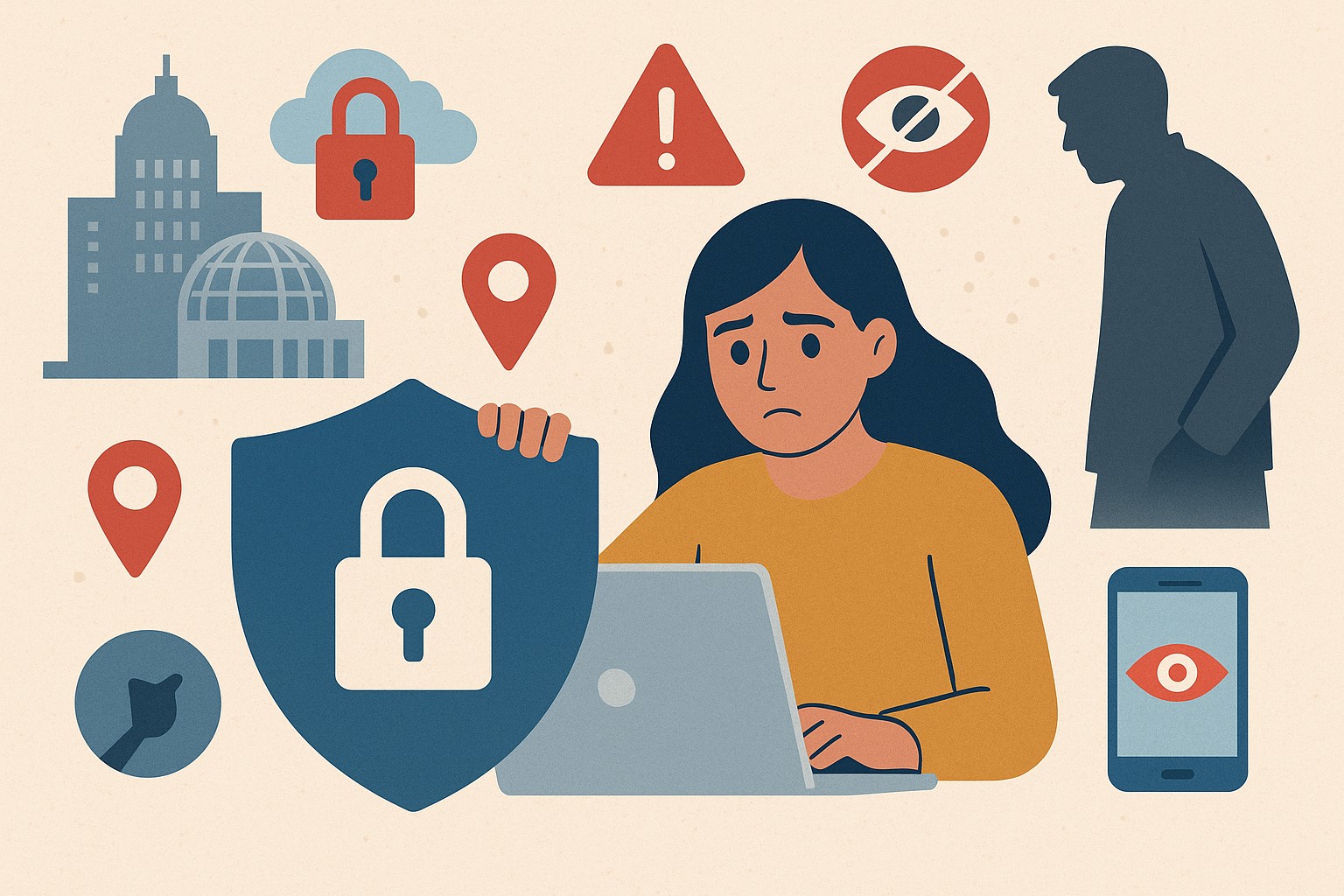Locking Down Tech: San Jose-Specific Digital-Safety Guide for Victims of Stalking & Abuse
This guide provides San Jose victims of stalking and abuse with a step-by-step tutorial on securing their digital lives, including phones, emails, and social media, to protect their safety and privacy.

In the digital age, technology is a powerful tool for connection, but it can also be a weapon used for stalking, harassment, and abuse. For victims in San Jose, securing your digital life is not just about privacy—it is a critical step toward ensuring your physical safety. This guide provides a San Jose-specific, step-by-step tutorial on how to lock down your technology from an abuser or stalker.
The First Step: Securing Your Devices 📱
Your phone and computer are the primary points of vulnerability. An abuser may have access to your passwords or have secretly installed spyware.
- Change All Passcodes: Immediately change the passcodes on your phone, tablet, and computer. Use a new, complex passcode that an abuser could never guess.
- Reset Biometrics: Delete and re-register your fingerprints or face ID. An abuser may have set up their own access without your knowledge.
- Check for Spyware: Look for unusual apps, a rapidly draining battery, or the phone getting hot when not in use. If you suspect spyware, the safest option is to perform a factory reset, but be aware that this will erase all data.
- Create a New User Account: On a shared computer, create a new user account for yourself and log out of the shared one. This prevents an abuser from seeing your activity.
The Digital Footprint: Emails and Accounts 📧
Your email is the gateway to all your other online accounts. Gaining control of it is paramount.
- Create a New, Secure Email: Create a brand-new email address from a different provider. Use a strong password and do not create it on a device the abuser has access to.
- Change Passwords for Critical Accounts: Use your new email to change the passwords on all financial, social media, and online shopping accounts. This is a critical step to prevent an abuser from accessing your money or tracking your purchases.
- Activate Two-Factor Authentication (2FA): This is the best defense against unauthorized access. 2FA requires a second code (sent to your new, secure phone) in addition to your password, making it nearly impossible for an abuser to log in.
Geolocation and Tracking: The San Jose Context 📍
Abusers often use location tracking to stalk their victims. San Jose-specific concerns include:
- "Find My..." and Geolocation Apps: Go into your phone's settings and turn off all location-sharing permissions, especially on apps like "Find My" or other location-based services. An abuser may be using these to track your movements.
- Vehicle Tracking: Be aware that some newer cars and even key fobs contain GPS tracking technology. You may need to take your car to a mechanic to have it professionally checked for hidden trackers.
- Smart Home Devices: If you shared a home with an abuser, disable or reset all smart home devices, such as cameras, smart speakers, and thermostats. These can be used for surveillance and control.
Preserving Evidence and Seeking Help in San Jose
While securing your technology is key, preserving evidence of abuse is vital for legal action. Take screenshots of threatening texts, emails, or social media posts and save them to a secure cloud storage account.
Local San Jose Resources: The YWCA Golden Gate Silicon Valley and other local legal aid organizations in San Jose specialize in helping victims of abuse and can provide free, confidential advice on digital safety, evidence preservation, and how to file for a restraining order.
[object Object]
1. How can I tell if my phone is being tracked?
Signs of tracking can include a significant decrease in battery life, unexplained data usage, or location services turning on or off without your knowledge. The safest option is to perform a factory reset on a device that you believe has been compromised.
2. Should I delete all my social media?
It is often safer to simply lock down your social media. Change all passwords, activate 2FA, adjust privacy settings, and block the abuser and anyone associated with them. Deleting accounts can sometimes be a red flag to the abuser.
3. What if my abuser uses a fake social media account to contact me?
Block all communication from any account you don't recognize. Do not engage with the abuser. You can also report these fake accounts to the social media platform.
4. How can I secure my smart home devices?
The best way is to unplug or reset all smart devices. If you are still in a shared home, you can also change the password on your Wi-Fi network so the abuser cannot reconnect their devices.
5. What's the best way to save digital evidence for court?
Take screenshots of all relevant messages and posts, ensuring the screenshot includes the sender, date, and time. Save these files to a secure cloud service or a new, private email. Do not delete the original messages.
6. Are there local San Jose resources that can help with this?
Yes. The Santa Clara County Superior Court has partnerships with local legal aid and support organizations, such as the YWCA Golden Gate Silicon Valley, which can provide free assistance with digital safety and legal matters.
